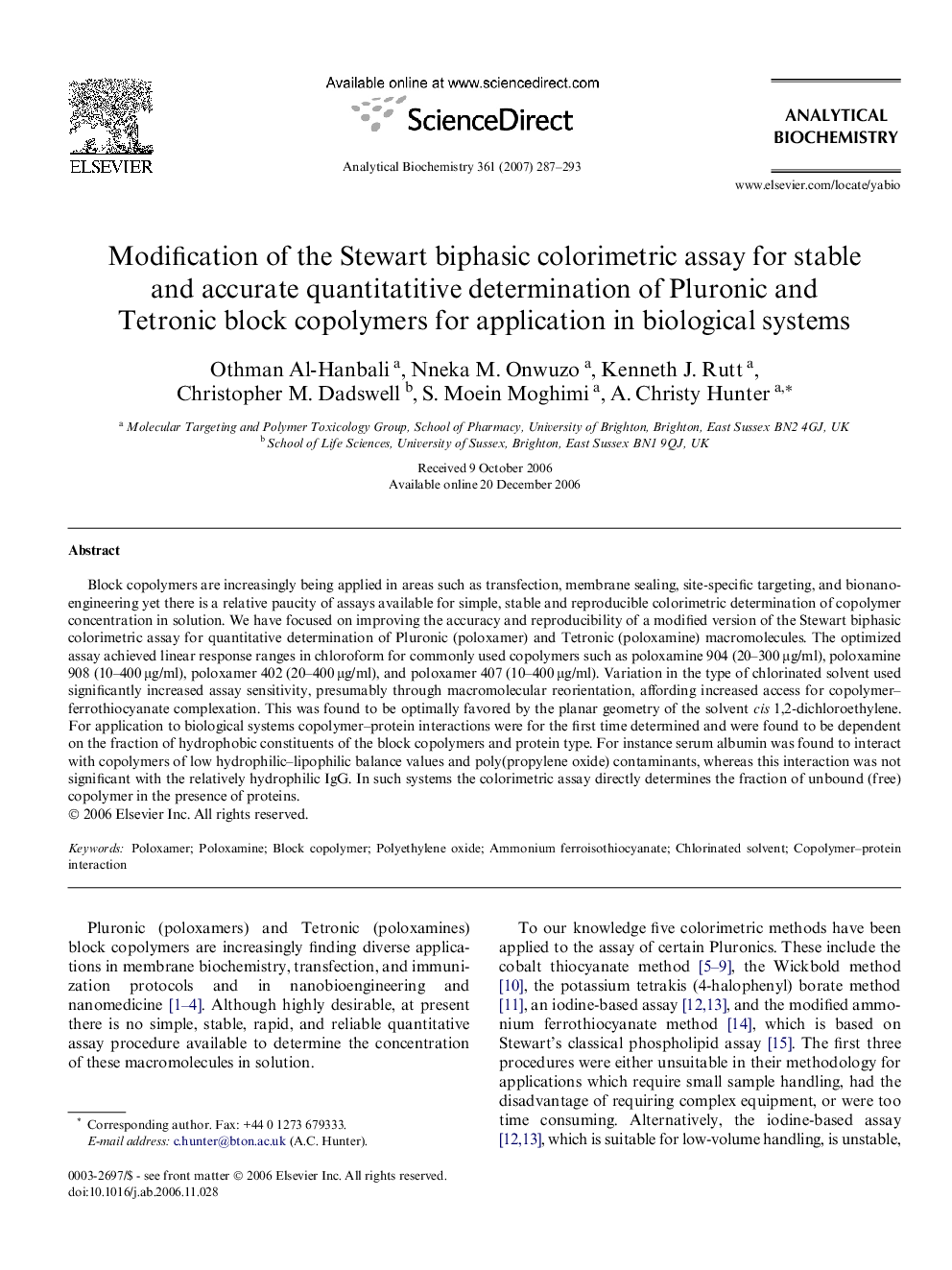| Article ID | Journal | Published Year | Pages | File Type |
|---|---|---|---|---|
| 1175521 | Analytical Biochemistry | 2007 | 7 Pages |
Block copolymers are increasingly being applied in areas such as transfection, membrane sealing, site-specific targeting, and bionanoengineering yet there is a relative paucity of assays available for simple, stable and reproducible colorimetric determination of copolymer concentration in solution. We have focused on improving the accuracy and reproducibility of a modified version of the Stewart biphasic colorimetric assay for quantitative determination of Pluronic (poloxamer) and Tetronic (poloxamine) macromolecules. The optimized assay achieved linear response ranges in chloroform for commonly used copolymers such as poloxamine 904 (20–300 μg/ml), poloxamine 908 (10–400 μg/ml), poloxamer 402 (20–400 μg/ml), and poloxamer 407 (10–400 μg/ml). Variation in the type of chlorinated solvent used significantly increased assay sensitivity, presumably through macromolecular reorientation, affording increased access for copolymer–ferrothiocyanate complexation. This was found to be optimally favored by the planar geometry of the solvent cis 1,2-dichloroethylene. For application to biological systems copolymer–protein interactions were for the first time determined and were found to be dependent on the fraction of hydrophobic constituents of the block copolymers and protein type. For instance serum albumin was found to interact with copolymers of low hydrophilic–lipophilic balance values and poly(propylene oxide) contaminants, whereas this interaction was not significant with the relatively hydrophilic IgG. In such systems the colorimetric assay directly determines the fraction of unbound (free) copolymer in the presence of proteins.
